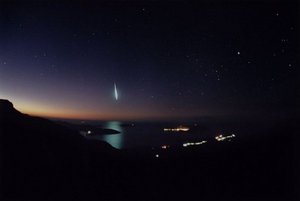
|
| ©Unknown |
Imagine staring into the sky and seeing a tiny yellow dot, gradually getting closer. That dot doubles in size every second, until it slowly darkens the sky. You realize that this dot is actually the size of New York City and is screeching through the atmosphere faster than the speed of sound, coming right for you. This massive object will cause tsunamis, earthquakes and obliterate natural daylight for years...oh... and it will kill you. Similar asteroid impacts have and will happen on numerous occasions in our earth's history. Today we'll show you the biggest impact craters by diameter.
10. Barringer Crater, Arizona, US
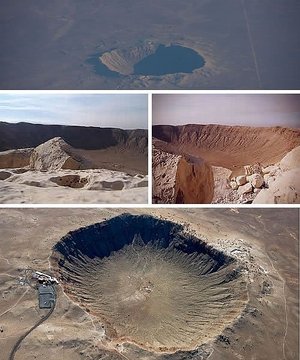
|
| ©Unknown |
Some 49,000 years ago a large nickel-iron meteorite "just" 150 ft across, weighing several hundred thousand tons (~300,000) and traveling at a speed of 40,000 miles per hour, hit Earth. The result of this meteor lies 55 km east of Flagstaff, Arizona and is called the Barringer Crater: the best preserved impact crater ever. The force generated by the impact was equal to the explosion of 20 million tons of TNT. Picture that.
It measures 0.75 miles (1.2 km) across, is 575 ft (175 m) deep and has a rim 148 ft (45 m) higher than the surrounding plain. Discovered in 1902, the Barringer Crater was named after Daniel Barringer, a successful mining engineer. Today it is still owned by his family and is also known as Meteor Crater, Coon Butte, and Canyon Diablo.
9. Bosumtwi, Ghana
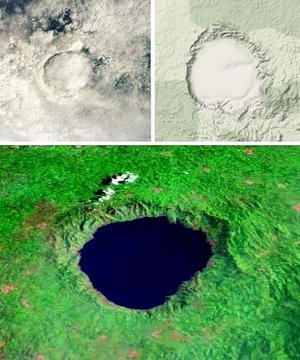
|
| ©Unknown |
About 30 km south-east of Kumasi, Ghana, in the crystalline bedrock of the West African Shield, lies Lake Bosumtwi: the country's only natural lake. The impact of a meteorite some 1.3 million years ago, opened up hole in the ground with a 6 mile (10.5 km) diameter. The crater gradually got filled with water to form the lake we see today. Surrounded by dense rainforest, the Ashanti people consider it to be sacred. They think it's the place where souls of the dead come to bid farewell to the god Twi.
8. Deep Bay, Canada
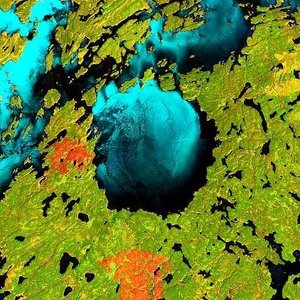
|
| ©Ersi |
Situated near the south-western tip of Reindeer Lake in Saskatchewan, Canada, Deep Bay is a strikingly circular, very deep and unusually irregular and shallow lake. The 8 mile (13km) wide crater is a complex impact structure with a low, totally submerged central uplift, formed about 100 million years ago (some say 140 million) when a large meteorite crashed in the area.
7. Aorounga impact crater, Chad
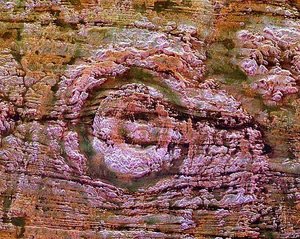
|
| ©Unknown |
Aorounga is an eroded meteorite impact crater that formed 2-300 million years ago in an area of the Sahara Desert, northern Chad, in Africa, when a comet or asteroid with a 1 mile diameter (1.6 km across) hit the crust of Earth. Such impacts only happen roughly, once every million years.
The crater is about 11 miles (17 km) across and is accompanied by two nearby circular features that have been revealed by the Space Shuttle's SIR-C radar after picturing an area of about 22 miles (36 km). If the assumptions and the hypothesis that the dark band in the upper right corner could be a second impact crater, then Aorounga may be part of a chain of multiple impact craters.
6. Gosses Bluff, Australia
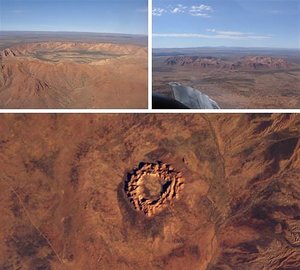
|
| ©Unknown |
Approximately 142 million years ago, a large asteroid or comet (22 km in diameter) crashed at 40 km/sec in the southern Northern Territory, near the center of Australia, and released massive energy equivalent to 22 000 megatonnes of TNT. This is how one of the most significant impact structures in the world, the Gosses Bluff crater formed. Dimensions are also impressive: it has a 15 mile (24km) diameter and goes down to 16,400 ft (5,000m). What we get to see today is a highly eroded structure that still stands as a stark reminder of the event.
5. Mistastin Lake, Canada
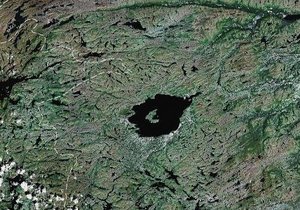
|
| ©Unknown |
Located in Labrador, Canada, the Mistastin crater is the result of a meteorite crash, that caused a 17.4 miles (28km) wide giant hole into the ground, 38 million years ago. Since then the eastward moving glaciers have drastically reduced its size and a lake appeared within the rims, Mistastin Lake. It occupies an elliptical, east - north-east trending depression, approximately 11 by 7 miles in size. In the middle of the lake, there's an arcuate central island which could be the central uplift of the complex crater structure.
4. Clearwater lakes, Canada
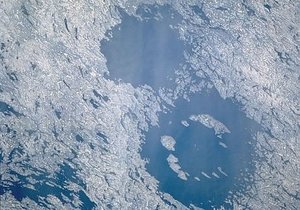
|
| ©Unknown |
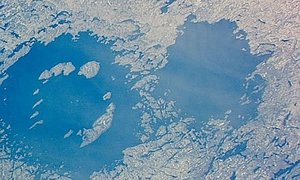
|
| ©Unknown |
Two circular lakes/impact craters on the Canadian Shield in Quebec formed simultaneously by the impact of an asteroid pair which crashed on Earth approximately 290 million years ago, near the eastern shore of Hudson Bay. The larger of the two craters is West Clearwater Lake with a 20 mile (32km) diameter while the smaller one, East Clearwater Lake has a 13.7 mile (22km) diameter. The lakes are a great tourist location mostly because of the number of sprinkling islands that form a sort of a "dotted line". The lakes are also, obviously, famous for their clear waters.
3. Kara-Kul, Tajikistan
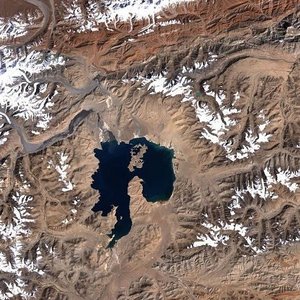
|
| ©Unknown |
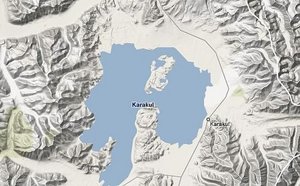
|
| ©Unknown |
At an altitude of 13,000 feet (3,900 m) above sea level, lies Kara-Kul, also known as Qarokul: a 16 mile (25km) wide lake in the Pamir Mountains in Tajikistan, close to the Chinese border. The lake is actually located within a 28 mile (45km) wide circular depression, which was hit by a meteorite approximately 5 million years ago, Kara-kul was only discovered recently, through satellite imagery.
2. Manicouagan, Canada
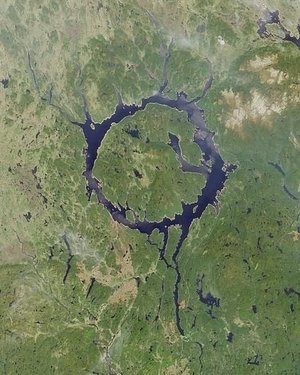
|
| ©Unknown |
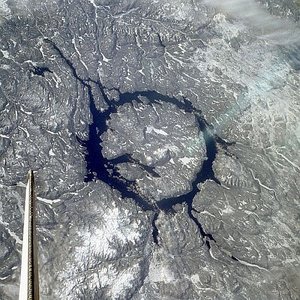
|
| ©Unknown |
Manicouagan Reservoir (Lake Manicouagan) also known as the "eye of Quebec", is an annular lake in central Quebec, Canada, that lies within the remains of an ancient, eroded impact crater. Some 212 million years ago, a 3 mile (5km) wide asteroid hit the earth, to causing a 62 mile (100km) wide giant hole. It has been worn away by the passing of glaciers and other erosive processes, ever since.
1. Chicxulub, Mexico
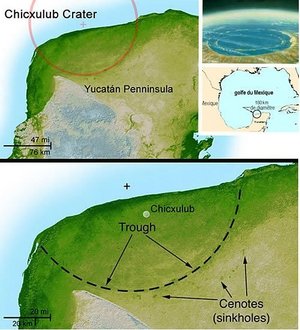
|
| ©Unknown |
Buried underneath the Yucatán Peninsula in Mexico, near the Chicxulub village (which means "the tail of the devil" in Mayan), this ancient impact crater is simply huge at 105 miles (170km) in diameter. The impact happened roughly 65 million years ago when a comet or asteroid the size of a small city crashed (equivalent to 100 teratons of TNT) on Earth and caused destructive mega-tsunamis, earthquakes and volcanic eruptions around the globe.
The Chicxulub impact is widely believed to have led to the extinction of dinosaurs, because of a global firestorm or because of a dramatic and widespread greenhouse effect that caused long-term environmental changes.



Reader Comments
to our Newsletter